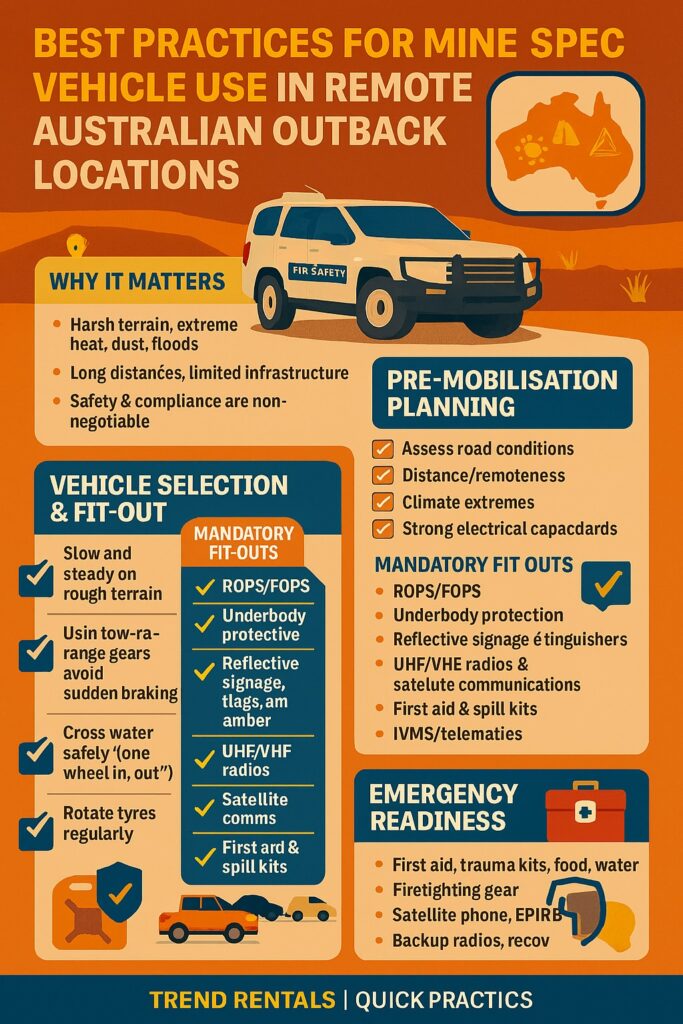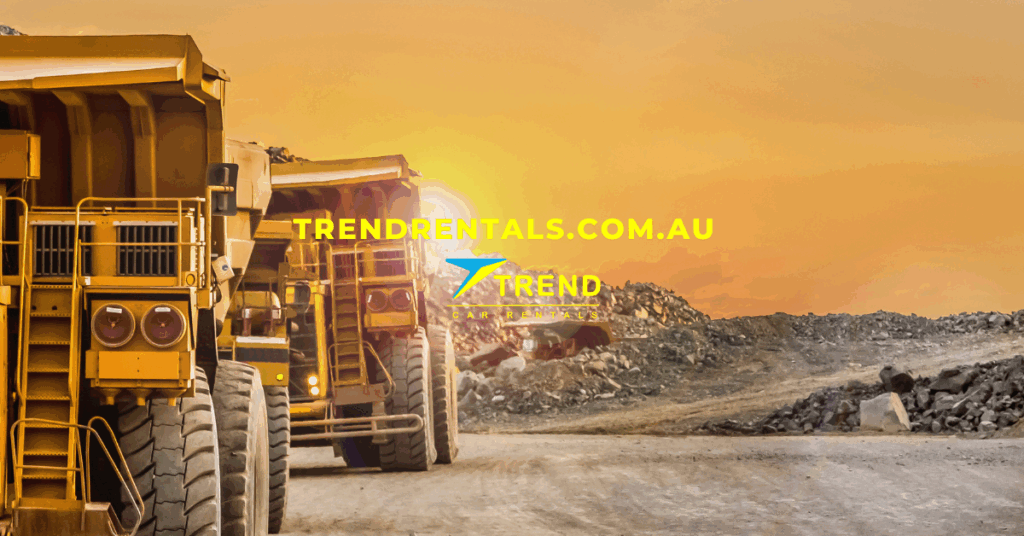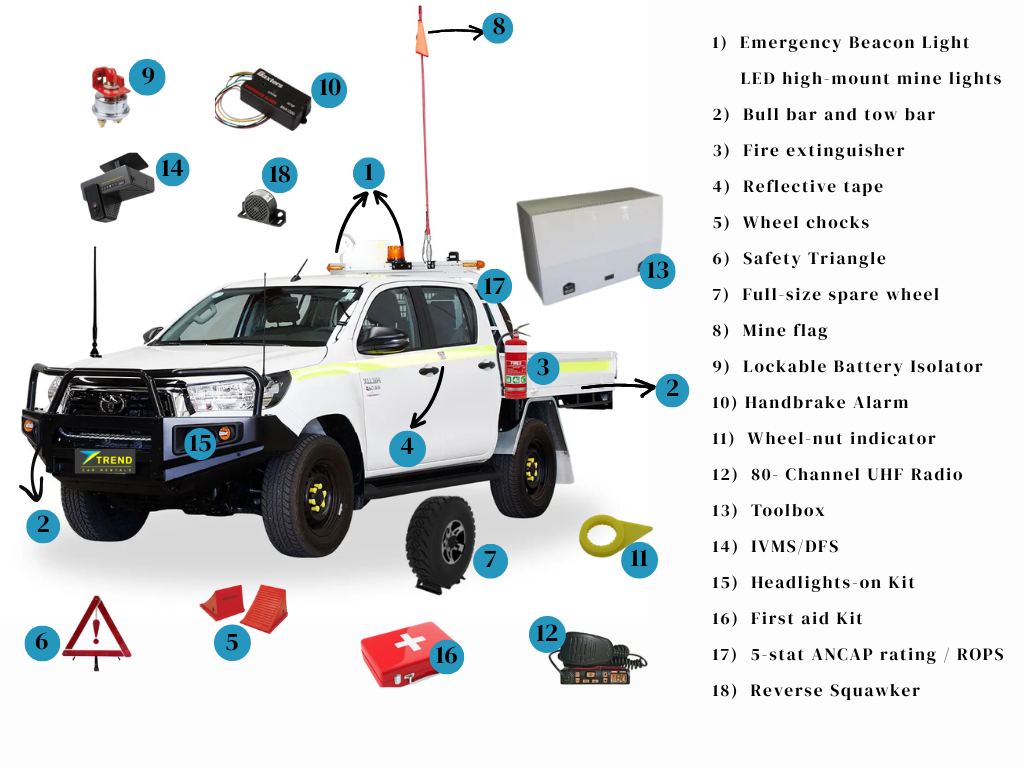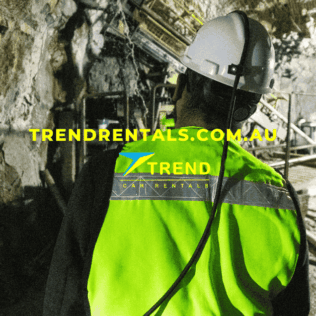Operating mine spec vehicles in Australia’s remote Outback is a unique challenge. Harsh terrain, extreme temperatures, isolation, limited infrastructure, and strict safety requirements all conspire to test both machines and crews. Yet mining, exploration, and infrastructure projects increasingly rely on such locations—and it is in these environments that best practices for vehicle use separate success from costly setbacks.
This guide outlines the best practices every business should adopt (or require from contractors) when deploying mine spec vehicles in remote Australian settings. We’ll cover pre-mobilisation planning, vehicle selection and fit-out, operating procedures, maintenance regimes, emergency readiness, compliance, and leveraging rental partners like Trend Rentals to reduce risk and overhead.

Why the Outback Demands Exceptional Standards
Remote sites magnify every challenge:
- Vehicles travel long distances over unsealed, unpredictable roads that damage suspension, tires, and underbodies.
- Breakdowns or compliance failures can cost days of lost productivity because repair facilities are far away.
- Retrieving stranded vehicles is expensive and dangerous.
- Harsh climate—extreme heat, dust, heavy rain or flash floods—puts stress on all systems.
- Communication is often limited; mobile coverage may be weak or absent.
Because of this, “average” vehicle practices won’t cut it. You must embrace rigorous, site-tailored, resilient standards. Many of those standards align closely with mine spec compliance requirements. For a foundation on those, see Mine Spec Compliance Explained on the Trend Rentals blog.
Moreover, Trend Rentals offers a mine spec fleet and remote site delivery service, which is helpful when operations are deep in the Outback.

Pre-Deployment Planning
Site and Project Reconnaissance
- Understand road conditions – Are access roads graded, rocky, flood-prone? What is their condition in wet vs dry seasons?
- Distance & remoteness – How far is the site from maintenance hubs, towns, fuel stops?
- Climate extremes – High ambient temperatures, dust, solar radiation, torrential rain.
- Site compliance standards – Each mining company or contractor may impose unique additional requirements beyond general mine spec standards.
- Communication infrastructure – What radio, satellite, or UHF frequencies are required?
Use this recon to define your vehicle needs, buffer stock, spares, and logistics.
Vehicle Selection & Specification
Choosing the right base vehicle class is critical:
- Mine Spec Utes are useful for inspections, light cargo and personnel movement.
- Mine Spec 4WDs are essential when navigating rough terrain or off-road sections.
- Mine Spec Buses may be needed for crew transport.
Trend Rentals maintains a mine spec fleet tailored to Outback work—including 4WDs, utes and buses—for remote deliveries.
When selecting, demand vehicles with:
- Heavy-duty suspension, underbody protection, skid plates.
- High ground clearance and all-terrain tires rated for off-road stress.
- High-capacity cooling systems (radiator, intercooler) suited for continuous operation in extreme heat.
- Dual or auxiliary fuel tanks, long range, and reliable fuel systems.
- Strong electrical capacity to support additional accessories (lights, radios, tracking).
Compliance Fit-Out & Modifications
Beyond base vehicle strength, the following enhancements are often mandatory for Outback use and mine site compliance:
| Feature | Purpose / Value |
|---|---|
| ROPS / FOPS (Roll-over / Falling-Object Protection Systems) | Protect occupants during extreme incidents. |
| Fire suppression / portable extinguishers | In remote zones, fires escalate quickly. |
| Reflective signage, high-visibility tape, flags / whip aerials | Improve detection in dusty, low-contrast conditions. |
| Amber beacons / LED auxiliary lighting | For visibility in dawn, dusk or dust storms. |
| UHF / VHF radios, satellite communications | Ensure command link in low coverage zones. |
| Battery isolation / emergency shutdown switches | Safety in rescue or servicing events. |
| First aid kits, spill kits, emergency gear | Essential for self-reliance far from help. |
| Spare tires, tire repair kits | Flat tires are common off-road risk. |
| In-Vehicle Monitoring Systems (IVMS) / telematics | Capture vehicle health, driver behaviour, location. |
| Underbody protection / skid plates | Protect vital components (fuel lines, oil pans). |
Trend Rentals’ mine spec vehicles already incorporate many of these fit-outs and deliver to remote sites to save you the hassle of arranging modifications yourself.

Best Practices in Operation
Pre-Start & Daily Checks
- Visual inspection: tires (including sidewalls), underbody, lights, mirrors, fluid levels.
- Check UHF / communication gear functionality.
- Ensure beacon lights, reflectors, safety flags are intact.
- Confirm spare wheels are in serviceable condition and accessible.
- Check all emergency gear (fire extinguisher, first aid kit, spill kit) is present, accessible, and not expired.
- Confirm documentation: compliance certifications, logbooks, site permits.
A consistent, documented daily checklist helps catch issues early. Trend Rentals provides compliance documentation with each hire to expedite site entry.
Driving Techniques
- Slow & steady over rough terrain is better than fast and erratic.
- Engage low-range gears when required.
- Avoid sudden braking or steering on loose surfaces.
- Use “one-wheel in, one out” crossing techniques for shallow water flows.
- Avoid bogging: keep momentum, avoid deep ruts, and travel only when necessary.
- Rotate wheel positions regularly to even out wear.
Driver training is non-negotiable—drivers must know how to operate safely under remote, challenging conditions.
Fuel Management
- Use high-quality, clean fuel; avoid contamination.
- Always refill before hitting dangerous low levels—distance to refuel stations can be significant.
- Carry spare fuel in certified jerry cans if permitted by site policies.
- Monitor consumption trends for any sudden increases (which may signal leaks or inefficiencies).
Load & Cargo Management
- Distribute loads evenly to avoid overloading axles.
- Secure all cargo to avoid shifting loads in poorly graded tracks.
- Avoid carrying unnecessary weight (reducing fuel efficiency and stress on suspension).
- Use trailers where possible—but ensure trailers are also fitted to mine spec.
Environmental & Seasonal Considerations
- In heat, monitor engine temperature, oil, and cooling systems more frequently.
- In rainy season, avoid crossing flooded tracks without confirmation. Floodwater depth, speed, and underflow capability must be assessed.
- Protect air intakes and electrical systems from dust ingress (pre-filters, sealed connectors).
- Carry recovery gear (snatch straps, winches, sand tracks) and know how to use them.
- Ensure the undercarriage is cleaned to prevent corrosion from debris and salt.
Maintenance Strategy & Reliability
Preventative & Scheduled Maintenance
Even in remote areas, a disciplined maintenance schedule is critical:
- Oil, transmission, differential, and coolant changes at manufacturer-recommended intervals, or sooner under harsh use.
- Filter replacement (air, fuel, oil) more frequently than in standard use conditions.
- Inspect suspension, brake systems, ball joints, steering linkage regularly.
- Monitor tire tread depth, pressures, and alignment.
- Electronic systems (telematics, radio, sensors) should be checked periodically.
- Keep thorough logs and inspection records for compliance and audit.
Remote Support & Breakdowns
- Pre-negotiate support from local workshops along transit routes.
- Carry a “mission-critical” spares kit: belts, hoses, fuses, sensors, cables, hoses, clamps.
- Swap-out strategy: when significant repairs are needed, have backup vehicles or transfer assets to other rigs.
- Trend Rentals often supports breakdown replacement for their mine spec hire fleet.
Telematics & Monitoring
Using telematics or IVMS helps:
- Detect engine faults before failure.
- Monitor driver behaviour (harsh braking, acceleration) which may suggest training needs.
- Track location and route usage for planning and logistics.
- Maintain compliance logs automatically.
Emergency Preparedness & Risk Management
Emergency Kits & Provisions
- Comprehensive first aid kit, trauma supplies.
- Emergency food, water, thermal blankets, shelter.
- Firefighting equipment (extinguishers, suppression kits) appropriate for vehicle class.
- Communication backup (satellite phone, EPIRB, extra UHF/VHF).
- Lighting and hand tools (torches, hand tools, spare parts).
- Recovery gear: snatch straps, shackles, jack, shovel, traction mats.
These supplies must be checked, restocked, and certified before each deployment.
Contingency Plans
- Establish rescue or recovery protocols in case of breakdowns.
- Know aviation medevac or local medical infrastructure availability.
- Predefine check-in schedules or “dead man’s” communications.
- Train crews in remote survival, navigation, and injury response.
Insurance & Liability
- Ensure your insurance covers remote operations, especially in Outback risks.
- Clarify liability responsibilities for accidents, compliance failures, or vehicle loss.
- Confirm the hired vehicle provider (e.g. Trend Rentals) insures their fleet appropriately and what your risk exposure is under the hire agreement.
Compliance & Regulatory Best Practices
In remote projects, compliance is ever more scrutinised. Non-compliance can lead to denied site entry, penalties, or even contractual cancellation.
- Require full compliance documentation (certificates, logs, fit-out sheets) before mobilising.
- Use site-specific checklists and ensure every vehicle meets or exceeds them.
- Stay up to date with state and federal safety regulations and mining codes.
- Use only qualified installers for modifications; ensure QA of modifications.
- Maintain auditable records—daily logs, servicing, incident reports, driver training.
- Insist on pre-entry inspections and acceptance by site gatekeepers.
Trend Rentals emphasises full compliance in its hire fleet and delivers all necessary paperwork to minimize delays.
Also see the Checklist: What to Look for When Hiring a Mine Spec Vehicle article in Trend Rentals’ blog for practical evaluation criteria.
Leveraging Mine Spec Rental Partners
One of the best ways to mitigate many remote-location risks is to work with a seasoned rental provider rather than owning and managing everything yourself.
Why Use a Rental Provider
- They handle the complexities of compliance, modifications, and servicing.
- Remote delivery: vehicles arrive ready to go, even deep at site.
- Flexibility to upsize or downsize fleet as project demands change.
- Replacement or backup vehicles in case of failure.
- Predictable cost lines: no surprise capital or repair bills.
- Access to the latest compliant vehicles.
Trend Rentals, for example, offers flexible mine spec rentals across Australia, helping businesses scale fleet size and maintain compliance without large capital outlays.
Setting Up a Strong Rental Agreement
When contracting with a rental provider:
- Get clarity on responsibilities for damage, wear, servicing, and compliance.
- Ensure spare parts and backup replacements are included or available.
- Check that remote delivery and recovery logistics are accommodated.
- Confirm the vehicle base specification and optional extras to meet your site needs.
- Build in flexibility—options to swap types, or return surplus vehicles.
- Review insurance, liability clauses, and indemnities carefully.
- Insist that all compliance documentation (certificates, logs) comes with each vehicle.
Key Challenges & Mitigation Strategies
| Challenge | Risk | Mitigation / Best Practice |
|---|---|---|
| Breakdown in remote region | High cost, delay, stranded crew | Carry spares, backup vehicles, remote support contracts |
| Compliance audit failure | Denied site access, penalties | Pre-deployment inspections, documentation, QA of modifications |
| Fuel contamination or shortage | Vehicle outage or damage | Secure fuel supply chains, filters, carry reserves |
| Driver error or fatigue | Accidents or misuse | Training, rest policies, monitoring with IVMS |
| Extreme dust/sand ingress | Equipment failure, increased wear | Use sealed intakes, air filters, frequent cleaning |
| Flooded tracks or washouts | Route blockages and vehicle damage | Seasonal route planning, real-time route assessments |
| Communication blackspots | Loss of command, delayed rescue | Satellite comms, redundant radio systems, check-in schedules |
Address each proactively rather than reactively.
Case Example: Remote Outback Mining Project
Imagine a lithium exploration operation hundreds of kilometres from the nearest town in Western Australia. The contractor must transport crews, equipment, and consumables daily over dusty tracks, seasonal flooding, and rocky terrain.
By partnering with a mine spec hire provider and implementing best practices:
- Vehicles arrive site-ready, pre-fitted with compliance gear and remote support.
- Daily checklists catch small issues before they escalate.
- Telematics reveal a cooling fault trend, triggering early maintenance and avoiding a breakdown mid-project.
- Backup vehicles are staged nearby to step in if needed.
- Crew training ensures proper driving styles, load management, and emergency response.
The result: minimal downtime, compliance audits passed, safe operations, and project schedules remain on track.
Summary & Recommendations
To summarise, here are the best practices in condensed form:
- Plan thoroughly — site reconnaissance, compliance requirements, logistics routes.
- Specify rugged, compliant vehicles with enhanced cooling, suspension, fit-out gear.
- Conduct daily pre-start inspections and document everything.
- Train drivers in off-road, load handling, emergencies.
- Manage fuel, cargo, and environmental stresses proactively.
- Schedule rigorous preventative maintenance and carry spares.
- Deploy emergency kits & contingency plans for breakdowns or incidents.
- Ensure compliance via certified modifications and audit-ready documentation.
- Use telematics & monitoring to capture faults, performance, and driver behaviour.
- Engage experienced mine spec hire providers (such as Trend Rentals) to share liability, simplify logistics, and ensure better uptime.
In remote Australian Outback regions, the margin for error is narrow. Vehicle problems or compliance issues can shut down operations completely. By adopting these best practices, businesses operating in such regions can significantly reduce risk, maximize uptime, and focus on their core mission—delivery of safe, efficient, and effective mining or exploration operations.
